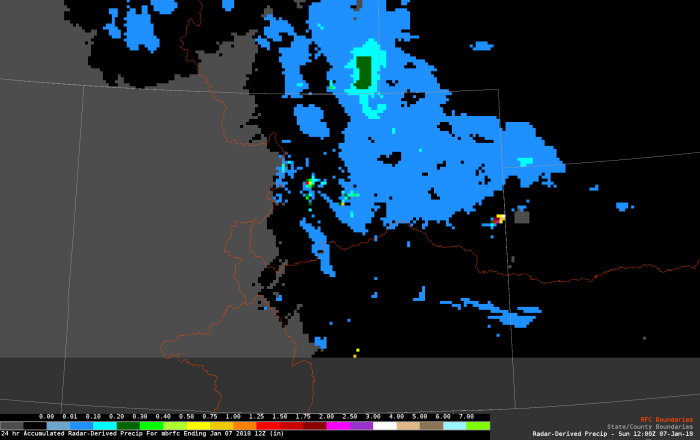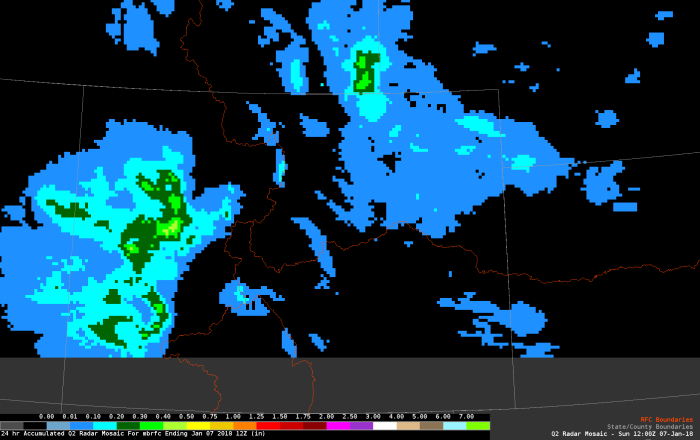Your data not updating? Or perhaps you ran this
too early? The
AHPS precip looks much
better:
The only data for mountainous areas comes from SNOTEL
sites, which arrive later in the day and are difficult
and time consuming to QC. Also, there are very good
reasons there may be discontinuities across a
continental divide.
Also, I will probably so a further analysis of the
data today. This is not a real-time data source for
verification, as discussed before.
See attached AHPS precip. image from this morning.
Also, attached RADAR summary for that day, and attached MRMS
summary.
John
AHPS
RADAR

MRMS

--
Ying Lin
NCEP/EMC/Verification, Post-processing and Product Generation Branch
NCWCP Cubicle No. 2015
Ying.Lin@noaa.gov